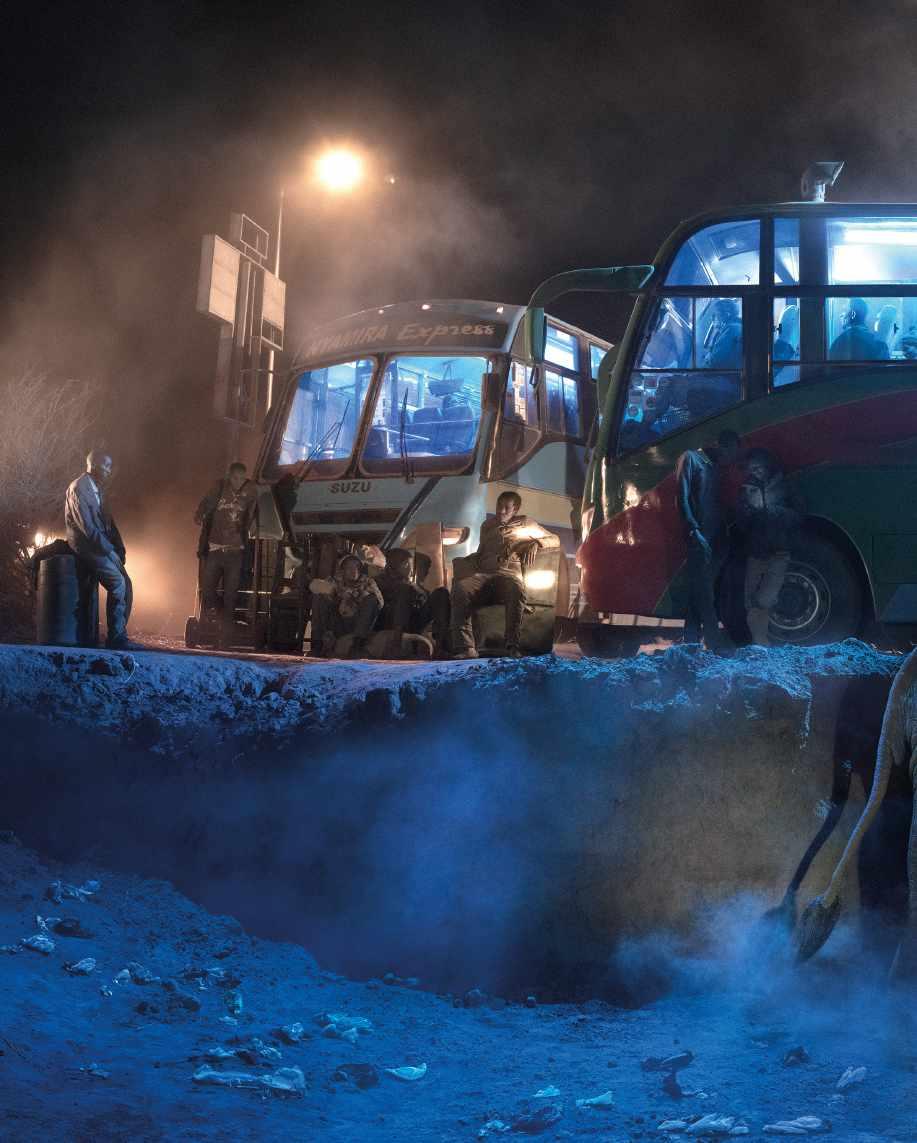
4 minute read
Photographer of the Year
Nick Brandt, Conservation Photographer of the Year
By Marie Kjellsdotter. Photo: Nick Brandt
Advertisement

The Perfect World Foundation’s award ’Conservation Photographer of the Year’ was presented to British photographer Nick Brandt in 2019, for his unfiltered interpretations of man’s influence on the natural world. Brandt’s latest series of photographs, ’This Empty World’, reflects the collision between animals and people in a world of relentless development, in well-thought-out and intriguing image compositions.
In 2013, after twelve years of photographing in East Africa, Brandt’s celebrated trilogy, ‘On This Earth, A Shadow Falls Across the Ravaged Land’ was completed and released in full. In this series of beautiful black-and-white images Brandt aimed to portray animals as sentient creatures, not so different from us.
In Brandt’s epic panoramic series titled ’Inherit The Dust’ from 2016, he documents man’s devastating influence in places where animals once roamed freely. The images, where his full-scale animal portraits were placed in landscapes of explosive urban development, factories, wastelands and quarries, depict how two worlds have collided with catastrophic consequences.

CONSTRUCTION TRENCH WITH JACKAL
In Brandt’s latest project, ’This Empty World’, he addresses humankind’s escalating destruction of the natural world. The series explore a world overwhelmed by exploitation, where there is no longer room for animals to survive. The people portrayed are also often swept along by the forceful tide of modern progress.
Each image is a combination of two different moments, captured several weeks apart, and almost always from exactly the same locked camera position. Initially, a partial set is built and lit. The sites chosen for the different sets are ordinary, inhabited and unprotected places, close to villages, people, herds of livestock, motorcycles and other human presence. Then weeks, even months, go by before the animals living in the region are comfortable enough to approach, usually at night, and enter the frame.
When the animals are caught on camera, the full set is built, with motorway and bridge construction sites, petrol stations, bus stations and more. In all but a few images, the camera remains in the same position, and a second sequence is then photographed with a large group of people drawn from local communities. The final image is a composition of the two documented elements – animals and humans. And once each project is completed, all the installations that were built are taken down and all the parts are recycled, with virtually zero waste, leaving no trace in the landscape from the photo shoot.
Until 2019, Brandt has exclusively photographed in Africa (his next project deals with climate change in America), and one of his goals has been to document the destruction of the natural world there, before it is erased forever by humankind. In 2010, Brandt co-founded the non-profit organization Big Life Foundation, which helps protect 1.6 million hectares of East African wilderness in the Amboseli-Tsavo-Kilimanjaro region. With its capacity to hire 350 local rangers and staff through donations from, among others, The Perfect World Foundation, Big Life has been able to dramatically reduce the eradicating poaching in the region.
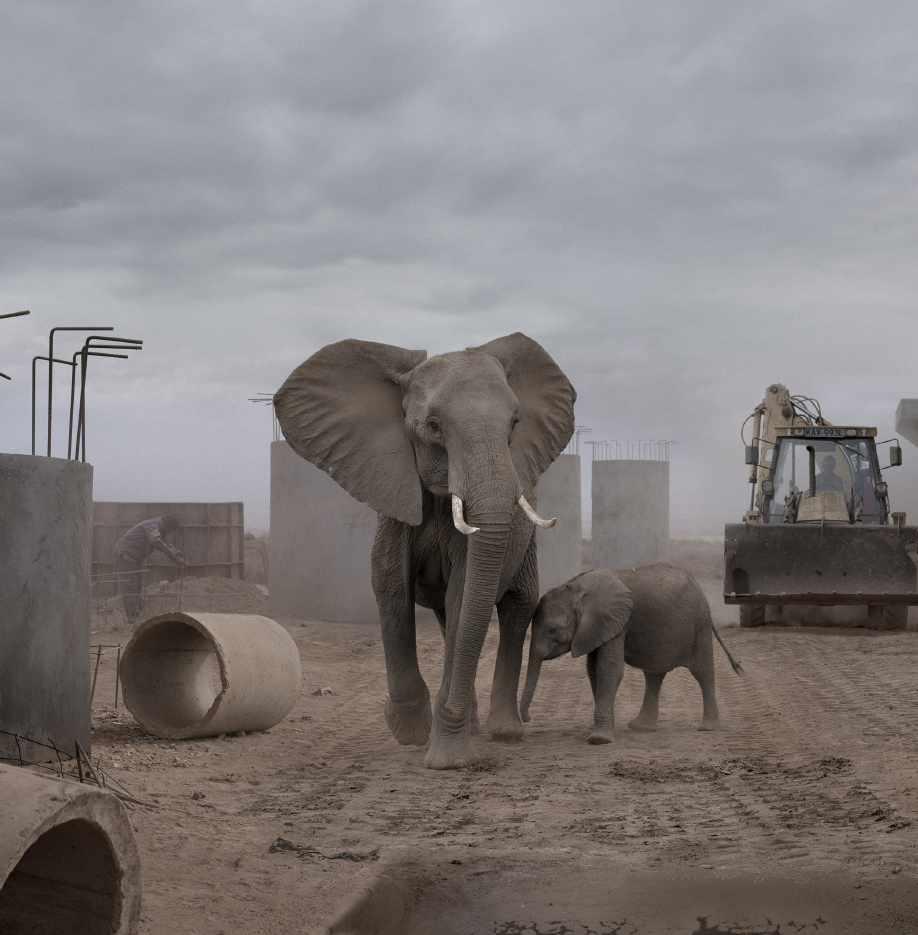
CONSTRUCTION WITH ELEPHANTS AND EXCAVATOR (left side)

CONSTRUCTION WITH ELEPHANTS AND EXCAVATOR (right side)

Design outline for a set with bridge construction site.

Initially, a partial set is built and lit. Weeks, even months, go by before the animals living in the region are comfortable enough to approach, usually at night, and enter the frame.

When the animals are caught on camera, the full set is built. In all but a few images, the camera remains in the same position, and a second sequence is then photographed with a large group of people drawn from local communities.

Once each project is completed, all the installations that were built are taken down and all the parts are recycled, with virtually zero waste, leaving no trace in the landscape from the photo shoot.

CHARCOAL BURNING WITH GIRAFFE AND WORKER (left side)
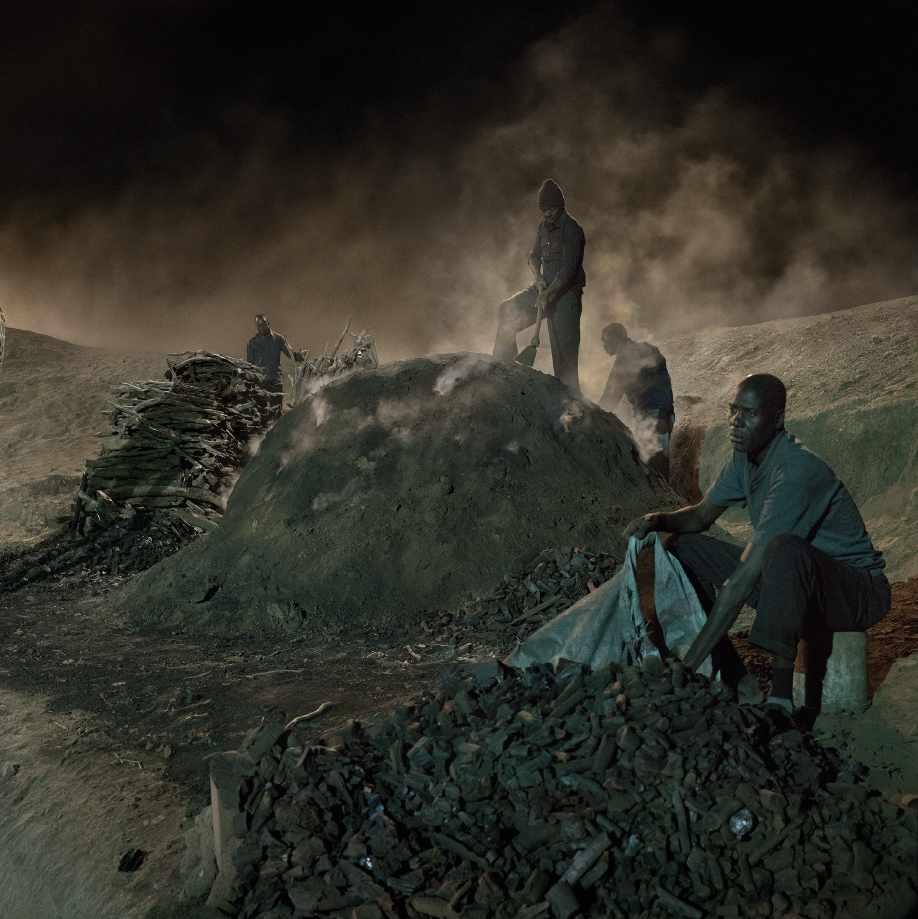
CHARCOAL BURNING WITH GIRAFFE AND WORKER (right side)
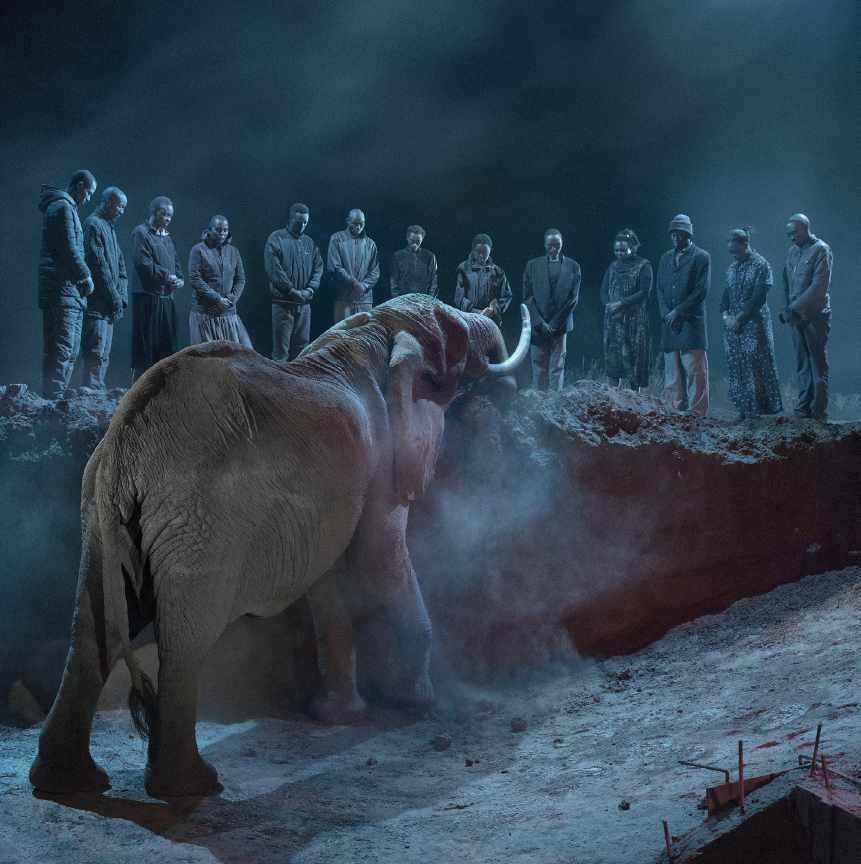
THE GATHERING

HIGHWAY BANK CONSTRUCTION WITH ELEPHANTS AND WORKERS (left side)

HIGHWAY BANK CONSTRUCTION WITH ELEPHANTS AND WORKERS (right side)
NICK BRANDT – SHORT BIO
2013, 12 years in the making, Brandt’s celebrated trilogy, ’On This Earth, A Shadow Falls Across the Ravaged Land’ was completed and released. In the trilogy Brandt established a style of portrait photography of animals in the wild similar to that of the photography of humans in studio setting, attempting to portray animals as sentient creatures, not so different from us.
2016, In Brandt’s series of epic panoramas ’Inherit The Dust’, he recorded the impact of man in places where animals used to roam, but no longer do. In each location, Brandt erected a life-size panel of one of his unreleased animal portrait photo graphs, placing the displaced animals on sites of explosive urban development, new factories, waste lands and quarries.
2019, Brandt releases his latest series ’This Empty World’ which addresses the escalating destruction of the natural world at the hands of humans, showing a world where, overwhelmed by runaway development, there is no longer space for animals to survive. Shoot in East Africa, the series is the first time Brandt is working in colour, in an ambitiously scaled project using constructed sets.
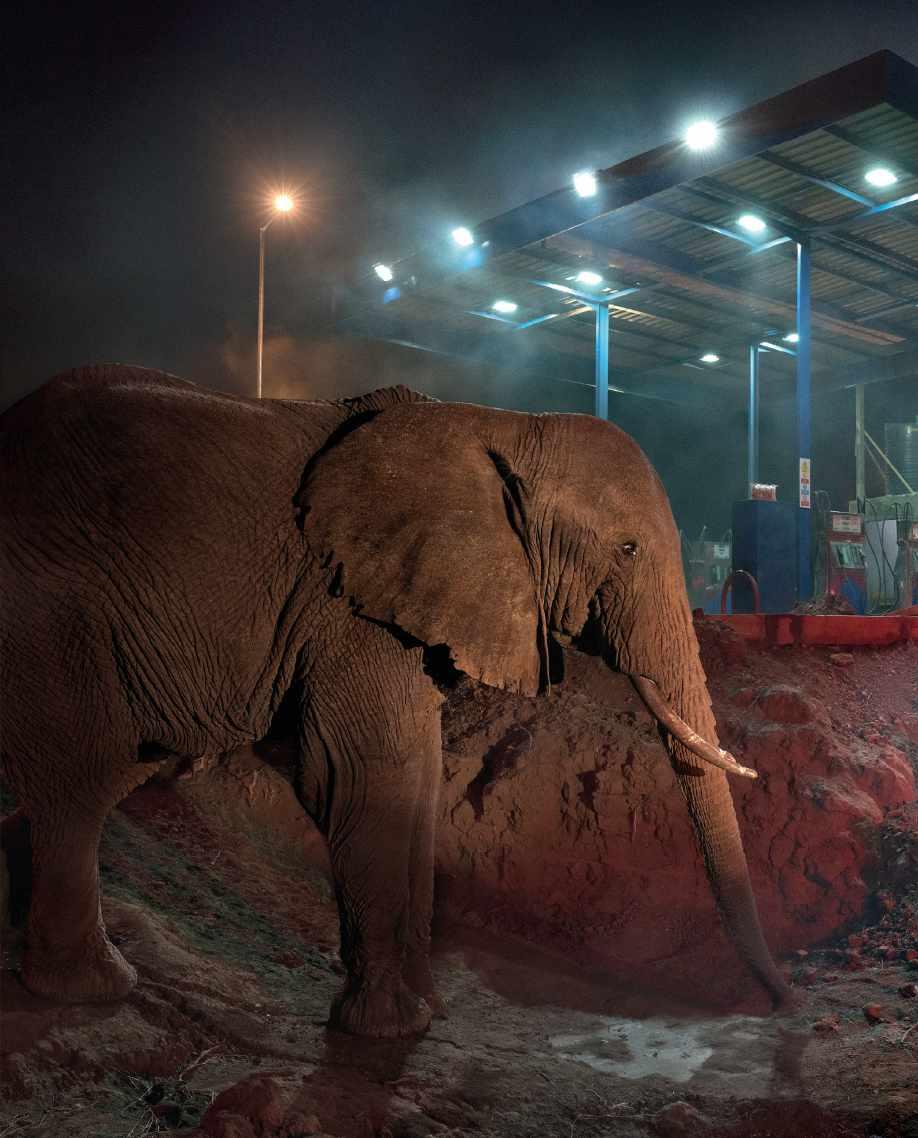
PETROL STATION WITH ELEPHANTS AND KIDS (left side)
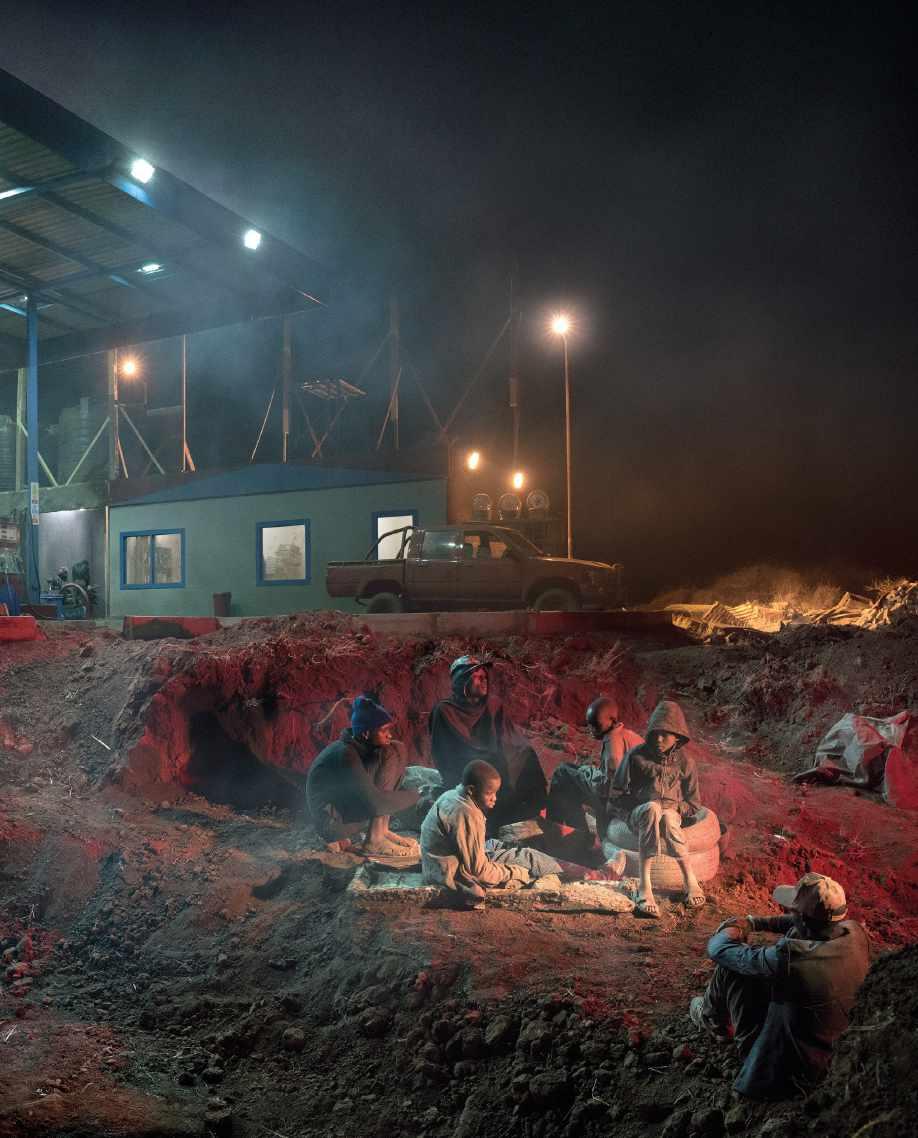
PETROL STATION WITH ELEPHANTS AND KIDS (right side)










